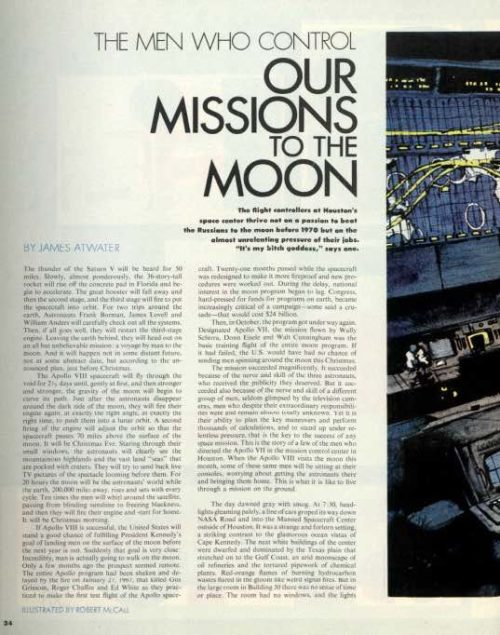The Unsung Heroes of the Moon Mission
Neil Armstrong.
We all know the name. As the first human to set foot on the moon on July 20, 1969, Armstrong is one of the few people whose name nearly all Americans recognize.
Far less famous is Glynn Lunney. As the aeronautical engineer who led the lunar-ascent team for Apollo 11, Lunney was essential in getting Armstrong to the moon and back.
The year after that success, it was Lunney’s leadership that helped rescue the astronauts in the ill-fated Apollo 13 mission. When an oxygen tank exploded, his team rapidly powered up the lunar module and migrated the guidance and navigational data to it from the failing command module.
When this Post article was published on December 28, 1968, these breathless American moments had not yet occurred, and Lunney was “merely” helping run the Apollo program from the ground as the flight director.
In “The Men Who Control Our Missions to the Moon,” author James Atwater describes some of the events in the pre-moon-landing Apollo 8 program, which sent the first spacecraft to orbit the moon. He praises NASA staff members, focusing on three engineers who took pride in the skill and judgment that had earned them a seat in “the trench” — the low, first row of consoles at mission control. It was these men, along with Lunney, who inspired the author to write, just six months before successful Apollo 11 mission, “Incredibly, man is actually going to walk on the moon.”

Featured image: Glynn Lunney (NASA)